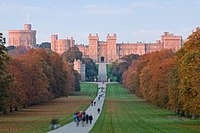
Size of this preview: 800 × 480 pixels. Other resolutions: 320 × 192 pixels | 1,024 × 614 pixels | 1,280 × 767 pixels | 2,000 × 1,199 pixels.
Original file (2,000 × 1,199 pixels, file size: 488 KB, MIME type: image/jpeg)
File history
Click on a date/time to view the file as it appeared at that time.
| Date/Time | Thumbnail | Dimensions | User | Comment | |
|---|---|---|---|---|---|
| current | 18:02, 18 April 2015 |  | 2,000 × 1,199 (488 KB) | Арриги Джузеппе | {{Information |Description ={{it|1=bacino di San Marco nel giorno dell'Ascensione}} |Source =http://www.istitutosuperioredadda.it/joomla/materiale_didattico/Minonzio/CANALETTO/07%20ritorno%20del%20bucintoro.jpg |Author ={{Creator:Gio... |
File usage
The following pages on the English Wikipedia use this file (pages on other projects are not listed):
Global file usage
The following other wikis use this file:
- Usage on af.wikipedia.org
- Usage on ar.wikipedia.org
- Usage on bg.wikipedia.org
- Usage on de.wikipedia.org
- Usage on es.wikipedia.org
- Usage on fa.wikipedia.org
- Usage on fr.wikipedia.org
- Usage on incubator.wikimedia.org
- Usage on it.wikipedia.org
- Usage on ja.wikipedia.org
- Usage on www.wikidata.org
- Q19660618
- Wikidata:WikiProject sum of all paintings/Creator/Canaletto
- Wikidata:WikiProject sum of all paintings/Catalog/Canaletto in England. A Venetian Artist Abroad, 1746-1755
- Wikidata:WikiProject sum of all paintings/Catalog/Canaletto: Giovanni Antonio Canal, 1697–1768
- Wikidata:WikiProject sum of all paintings/Catalog/Canaletto
- Wikidata:WikiProject sum of all paintings/Collection/Royal Collection
- Wikidata:WikiProject sum of all paintings/Catalog/The royal collection of paintings at Buckingham Palace and Windsor Castle with 180 photogravures








